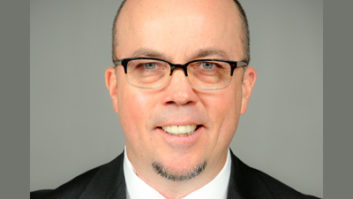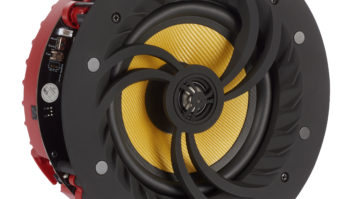NEW YORK – More brands and more SKUs will make the wireless multizone-speaker market far more competitive during the Christmas selling season than ever before, raising consumer awareness and expanding the market, marketing executives told TWICE.
Futuresource forecasts that 2014 U.S. sales of Wi-Fi-only and combination Wi- Fi/Bluetooth speakers will jump 89 percent to 1.95 million units at the factory level. Wireless multiroom-speaker sales will jump another 66 percent in 2015 to 3.2 million units, Futuresource Consulting forecasts.
Sales could continue to rise for years, given that U.S. household penetration stands at only 2 to 3 percent, marketers said.
In this growing market, the fourth-quarter product selection will expand to include the first wireless multizone products from Polk, Definitive Technology, Denon and Mass Fidelity. Monster stepped up its wireless-multizone activity with the launch of a trio of speakers, with more to come next year.
Meantime, Samsung expanded its lineup this year, as did JBL and Harman Kardon.
Other players include Pure, Cambridge Audio, DTS’s Phorus division, Bluesound, Libratone, Wren Audio, industry sales leader Sonos and Bose.
And more brands are on the way, including MartinLogan, Paradigm, Anthem, McIntosh, Wadia and Sonus Faber. They plan to enter the market using DTS’s PlayFi platform, but launch dates haven’t been announced. Altec Lansing and Panasonic plan speakers incorporating the rival Qualcomm All- Play technology, though availability dates haven’t been announced.
More major manufacturers and more high-end audio companies participating in the fourth-quarter selling season “will grow the pie as multiple manufacturers promote,” said Monster founder Noel Lee. Volume price points are reasonably high at $300 to $400, although many products are plagued by “mediocre sound quality because the money went into the electronics,” he said.
For his part, Sound United chief marketing officer Blair Tripodi agreed that consumers will see more choices than ever on the sales floors, creating competition for industry leader Sonos, but he said “all ships will rise,” thanks to the additional promotional activity.
“I think it’s pretty clear where audio is trending,” he said, pointing to the flat or “somewhat declining” sales of traditional component speakers resulting from the consolidation of specialty-A/V retailers and people cutting the cord via Bluetooth speakers because of their flexibility and portability.
Component audio will “remain core to our business for any years,” but Sound United, which markets the Polk and Definitive Technology brands, plans “highly aggressive” wireless-audio advertising and promotion that will stress the company’s long-time audio heritage, Tripodi said. Efforts will include a music-service copromotion, a Definitive partnership with John Legend, and advertising that kicks off in full force on Oct. 27.
The marketing campaign will last 10 weeks and consist of a multimillion-dollar media spend across digital, internet radio and out of home. It will be supported by launch partners Magnolia, Amazon and Crutchfield.
Sound United launched its Polk and DefTech PlayFi-based products in early October through Best Buy, Magnolia Home Theater stores within Best Buy, Crutchfield and Amazon, with regional power retailers and A/V specialists coming on board later this year. New types of distribution are planned for next year, he said.
At the retail level, ProSource president/COO David Workman said his dealers this quarter “are very much behind the category in both the multiroom application and the more simple Bluetooth variations.” He said he “absolutely” expects category growth because the market is “still very nascent in its development, although a little confusing right now with all of the new entrants, specifically in the multizone category.”
Anywhere from eight to 10 “competing formats” are hitting the market, and “because Sonos still dominates 97 percent or so of this category, the issue for dealers is focus and training on getting a competitive story to the consumer,” Workman said.
Another challenge for retailers is that “just about every competitive entrance” has “introduced an incomplete solution with a roadmap toward making it complete against a competitor that has been defining the category for almost 10 years,” Workman said.
For that reason, “we see Sonos dominating for at least the next year as these other platforms fine tune their competitive position against the incumbent.”
Suppliers that come to market, he added, shouldn’t just try to be another Sonos. “Every company has to really think about what their competitive advantage needs to compete vs. just saying, ‘We are Sonos with a little more margin,’ ” he said.
One retailer that is stepping up its wireless-multiroom merchandising is Best Buy, which added Monster to the wireless-audio selection on its main floor to join Sonos, Bose and Samsung, a spokesperson said. Sonos moved from about 350 Magnolia Home Theater stores within Best Buy to the main sales floor earlier this year but remains in the more than 50 Magnolia Design Centers in Best Buy stores, he noted.
Magnolia Home Theater and Magnolia Design Centers inside Best Buy stores have added Definitive Technology, Polk and Heos by Denon to join Korus, he added.
Nationwide this year, Best Buy renovated every store’s main home-theater department, which included additional space for wireless audio, the spokesman said. “Hundreds of stores’ home wireless audio space doubled in size, and virtually all of them expanded noticeably,” a spokesman said.













